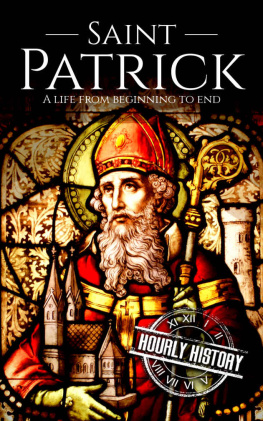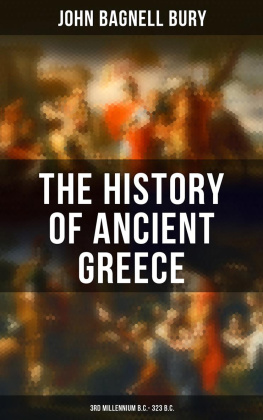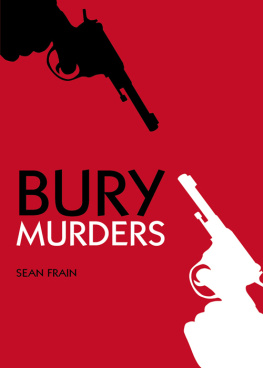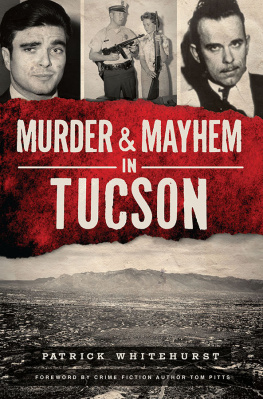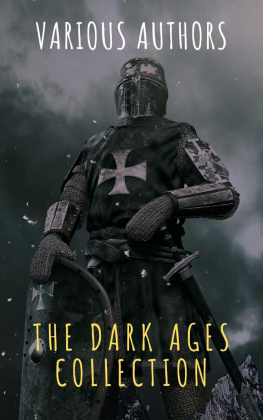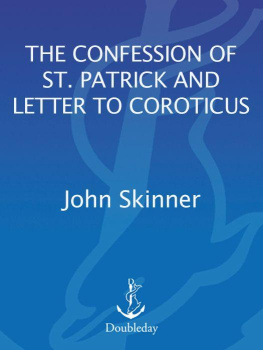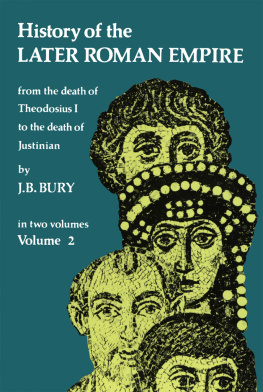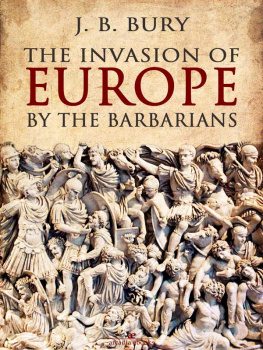Copyright
Introduction copyright 1998 by Dover Publications, Inc. All rights reserved.
Bibliographical Note
This Dover edition, first published in 1998, is an unabridged republication of the work first published by Macmillan and Co., Ltd. (London and New York) in 1905. The Introduction, by Liam de Paor, is new.
Library of Congress Cataloging-in-Publication Data
Bury, J. B. (John Bagnell), 18611927.
The life of St. Patrick and his place in history / John B. Bury.
p. cm.
Originally published: London : Macmillan and Co., 1905. With new introd.
Includes bibliographical references and index.
9780486144856
1. Patrick, Saint, 373?463? 2. Christian saintsIrelandBiography. I. Title.
BR1720.P26B87 1998
270.2092dc21
[B]
97-44209
CIP
Manufactured in the United States by Courier Corporation
40037902
www.doverpublications.com
PREFACE
PERHAPS the scope of this book will be best understood if I explain that the subject attracted my attention, not as an important crisis in the history of Ireland, but, in the first place, as an appendix to the history of the Roman Empire, illustrating the emanations of its influence beyond its own frontiers; and, in the second place, as a notable episode in the series of conversions which spread over northern Europe the religion which prevails to-day. Studying the work of the Slavonic apostles, Cyril and Methodius, I was led to compare them with other European missionaries, Wulfilas, for instance, and Augustine, Boniface, and Otto of Bamberg. When I came to Patrick, I found it impossible to gain any clear conception of the man and his work. The subject was wrapt in obscurity, and this obscurity was encircled by an atmosphere of controversy and conjecture. Doubts of the very existence of St. Patrick had been entertained, and other views almost amounted to the thesis that if he did exist, he was not himself, but a namesake. It was at once evident that the material had never been critically sifted, and that it would be necessary to begin at the beginning, almost as if nothing had been done, in a field where much had been written.
This may seem unfair to the work of Todd, which in learning and critical acumen stands out pre-eminent from the mass of historical literature which has gathered round St. Patrick. And I should like unreservedly to acknowledge that I found it an excellent introduction to the subject. But it left me doubtful about every fact connected with Patricks life. The radical vice of the book is that the indispensable substructure is lacking. The preliminary task of criticising the sources methodically had never been performed. Todd showed his scholarship and historical insight in dealing with this particular passage or that particular statement, but such sporadic criticism was no substitute for methodical Quellenkritik. Hence his results might be right or wrong, but they could not be convincing.
It is a minor defect in Todds St. Patrick that he is not impartial. By this I mean that he wrote with an unmistakable ecclesiastical bias. It is not implied that he would have ever stooped to a misrepresentation of the evidence for the purpose of proving a particular thesis. No reader would accuse him of that. But it is clear that he was anxious to establish a particular thesis. He does not conceal that the conclusions to which the evidence, as he interpreted it, conducted him were conclusions which he wished to reach. In other words, he approached a historical problem, with a distinct preference for one solution rather than another; and this preference was due to an interest totally irrelevant to mere historical truth. The business of a historian is to ascertain facts. There is something essentially absurd in his wishing that any alleged fact should turn out to be true or should turn out to be false. So far as he entertains a wish of the kind, his attitude is not critical.
The justification of the present biography is that it rests upon a methodical examination of the sources, and that the conclusions, whether right or wrong, were reached without any prepossession. For one whose interest in the subject is purely intellectual, it was a matter of unmixed indifference what answer might be found to any one of the vexed questions. I will not anticipate my conclusions here, but I may say that they tend to show that the Roman Catholic conception of St. Patricks work is, generally, nearer to historical fact than the views of some anti-Papal divines.
The fragmentary material, presenting endless difficulties and problems, might have been treated with much less trouble to myself if I had been content to weave, as Todd has done, technical discussions into the story. It was less easy to do what I have attempted, to cast matter of this kind into the literary shape of a biographya choice which necessitated long appendices supplying the justifications and groundwork. These appendices represent the work which belongs to the science of history; the text is an effort in the art of historiography.
It should be needless to say that, in dealing with such fragmentary material, reconstructions and hypotheses are inevitable. In ancient and mediaeval history, as in physical science, hypotheses, founded on a critical examination of the data, are necessary for the advancement of knowledge. The reconstructions may fall to-morrow, but, if they are legitimate, they will not have been useless.
The future historian of Ireland will have much to discover about the political and social state of the island, which is still but vaguely understood, and the religion of the Scots, about which it may be affirmed that we know little more than nothing. These subjects await systematic investigation, and I have only attempted a slight sketch (Chapter IV.), confining myself to what it seemed possible to say with tolerable safety on the chief points immediately relevant to the scope of this monograph. But, notwithstanding the dimness of the background, I venture to hope that some new light has been thrown on the foreground, and that this study will supply a firmer basis for the life and work of Patrick, even if some of the superstructures should fall.
The two maps are merely intended to help the reader to see the whereabouts of some places which he might not easily find without reference to the Ordnance Survey. I consulted Mr. Orpens valuable map of Early Ireland (unfortunately on a small scale) in Pooles Historical Atlas of Modern Europe . But he has used material which applies to a later period, and I have not ventured to follow him, for instance, in marking the boundary between the northern frontiers of the kingdoms of Connaught and Meath.
It was fortunate for me that my friend Professor Gwynn was engaged at the same time on a diplomatic edition of the records contained in the Codex Armachanus, which constitute the principal body of evidence. With a generosity which has placed me under a deep obligation, he put the results of his labour on the difficult text at my disposal, and I have had the invaluable help and stimulus of constant communication with him on many critical problems arising out of the text of the documents.
Since the book was in type I have received some communications from my friend Professor Rhys which suggest a hope that the mysterious Bannauenta, St. Patricks home, may perhaps be identified at last. I had conjectured that it should be sought near the Severn or the Bristol Channel. The existence of three places named Banwen (which may represent Bannauenta) in Glamorganshire opens a prospect that the solution may possibly lie there.



